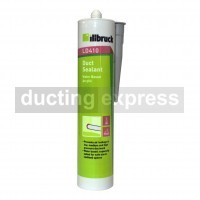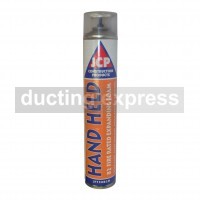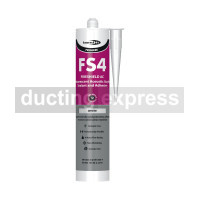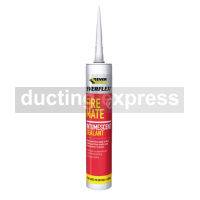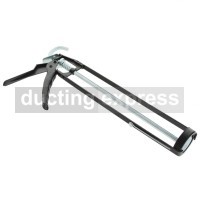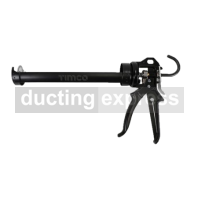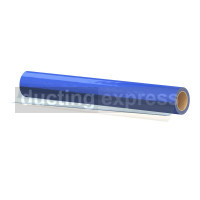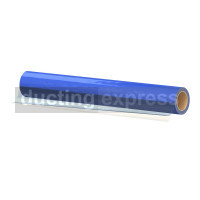Sealants
Types of Duct Sealants What They Do and Why You Need Them
The ductwork in your property transports conditioned air from one point to another. It is just like a system of pipes transporting liquids, but instead of a liquid, you have air running through those pipes. So you might think that it’s not so important if you have a hole or two in those pipes. What is the worst thing that’s going to happen? It can prove quite hard to cause any structural damage with the air from your HVAC. However, gaps and holes in your ductwork can actually cause harm. Not to the integrity of your property, but to your budget. Any openings in the ductwork will require your system to work harder, in order to compensate for the losses from the openings in the pipes. The pressure in your system will also drop and you will lose power, making the system inefficient. This can result in higher energy bills, which is especially unpleasant in commercial-grade systems where the amounts can be quite high.
Holes in the ductwork can be caused by corrosion or improper installation. In every place where you have some sort of duct fittings installed, small gaps can leed into a drop of pressure and loss of conditioned air. This problem can be resolved by sealing those openings in the ductwork and stopping air from escaping through them. In such scenarios, duct sealants come in handy. They are compounds designed to fill gaps and holes in the ductwork and also provide a good and long-lasting air seal. However, you may need to re-apply duct sealant onto openings around moving parts, or just additionally support the fittings to limit vibrations. Usually, duct sealants come in silicon or foam form, which makes them easy to apply. Solvent-based duct sealants may come in buckets like those for paint. They need to be applied with a brush. Foam duct sealants come in spray cans, similar to the foam sprays you might use yourself around windows and door frames. Silicon duct sealants come in tubes, just like the ones for construction silicon. You need a sealant gun in order to apply them.
Each of the HVAC duct sealant products on the market is suitable for different situations and has some benefits that others lack. In order to choose the right one for your situation, you need to be familiar with those differences. We will talk about every kind of air vent sealant and share our experience and knowledge with you in the following paragraph.
Duct Sealants Application: When Are They Used and Where
As we have already mentioned, duct sealants mostly come in several different forms.
- Silicon
- Foam
- Solvent-based sealants
A silicon duct seal is an ideal solution for small openings. In some cases, while installing the ductwork, you may need to drill a hole in the duct in order to install some type of mounting accessory. Often, those holes are not airtight. Even though you thread a bolt through the hole, the air is still able to escape. A single hole won’t have much of an effect on the performance of your HVAC but you will usually deal with multiple holes. Sometimes there is an option to add a washer with a rubber plating. When that washer is tightened against the duct with a bolt it will stop air from escaping. For the scenarios when a rubber-coated washer is not an option, you can always apply a bit of silicon duct seal on the thread of the bold and behind its head. When the bolt is tightened it will provide an airtight seal. Wherever you have a bend or other fitting installed on your ductwork there may be a gap between the duct and the fitting itself. Silicon duct seal is perfect to eliminate those gaps. All you need to do is apply some silicone sealant on the end of the duct and then push in the fitting in place.
Foam duct seal is used for sealing joints in the ductwork. It is applied over joints, where two pieces of ducting are connected, or where ducting fittings are installed. The foam is hand-held and all you need to do is to apply a thin layer over the joint. This will provide an airtight seal. Foam duct seal is also used as isolation for ducts that are located outside of the building. This effect boosts the performance of climate control systems that otherwise will need to compensate depending on outside conditions.
Solvent-based duct seal is applied with a brush. It provides a flexible seal that is water-resistant and fire retardant. It is mostly used to seal openings in flexible ductwork or around flange and longitudinal connections. It comes in a cartridge (380g), tube (140g) or tub (5l) form.
Depending on your situation you must choose the correct duct seal that will provide a proper airtight seal and has the needed benefits. If you have troubles selecting a sealant for your system contact the experienced support team of Ducting Express on 01455 616 444.
-

Duct Sealant 310ml
£3.23
-

Hand-Held Expanding Foam - 750ml B2 Fire Rated
£15.40
-

Sanitary Silicone Sealer 310ml (Transparent)
£4.90
-

Sanitary Silicone Sealer 310ml (White)
£4.46
-

Multi Purpose Silicone Sealer 310ml
£3.84
-

General Purpose Silicone Black 280ml
£2.90
-

General Purpose Silicone Brown 280ml
£2.90
-

General Purpose Silicone Grey 280ml
£2.90
-

Brushed Steel Aluminium Fungicidal Silicon Sealant 295ml
£8.20
-

Intumescent Sealant 310ml
£3.18
-

Fire Mate Intumescent Sealant White 295ml
£2.14
-

Mastic / Sealant Gun
£6.72
-

Heavy Duty Sealant Gun
£17.97
-

1 Roll Of Self Adhesive Blue Film For Dust Protection & Sealing Ducts (1000mm Wide, 100m Per Roll)
£54.99
-

1 Roll Of Self Adhesive Blue Film For Dust Protection & Sealing Ducts (500mm Wide, 100m Per Roll)
£27.50
